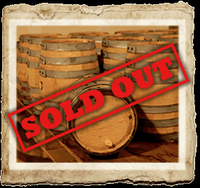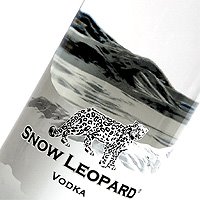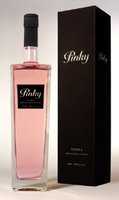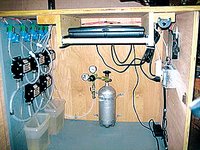
As I aimed the spray of water at the sprawling herb garden, just emerging from a prolonged period of heavy rain but already threatening to wilt under the hot early summer sun, I mentally ticked off everything I was going to do when the crop reached its peak.
Creating herb blends to perfume the smoke of the barbecue grill. Brightening the routine tossed salads in need of some new tastes. Finding just the right chopped leaves to blend into artisanal chevre cheeses from the local farm stands.
And, of course, infusing vodka.
Not that there is any shortage of flavored vodkas on the market. Infusions are arguably the biggest thing in the world of alcoholic beverages these days. The major money is found in handling infusions at the mass-production level in factories or distilleries, not at the local bar no matter how much of a signature gimmick is created. Virtually every commercial brand of vodka, for example, offers versions infused with various fruit flavorings. Likewise with some gins, rums and even whiskies.
It is just that I prefer my own infusions, free of chemicals and trickery. Buying such concoctions may be fine for ease of use but, just as a home cooked meal can be more enjoyable than a takeout spread, doing your own infusing is a lot more fun. It certainly can lead to a more enjoyable
cocktail party conversation than simply opening a bottle.
For example, a friend insists the only way to drink sambuca is with three -- not two, not four, but three -- coffee beans submerged in the glass. That is known as serving the anise-flavored Italian liqueur
con mosche, literally "with flies." I have always been tempted to slip a few
brown-coated M&Ms into his drink to see if he really knows the difference.
Of course, I could simply buy a bottle of negra sambuca, already infused with coffee essence. But that would kill the conversation.
Infusions have been around for nearly as long as alcohol has been part of the human experience. Liqueurs concocted on farms, in monasteries and in laboratories give testament to the boundless imagination of amateur and professional chemists. Mead makers of the Middle Ages infused their honey liquor with herbs and spices. And, the strength of alcohol was long believed to counteract the toxic parts of certain substances favored as medicines throughout the centuries.
Alcohol can be infused with botanicals, marinated with macerated fruits, or stirred together with other potions. It can be dotted with flecks of pure gold, cloves, grains of pepper, sprinklings of cinnamon. The mixtures can be festive, imaginative, wonderful introductions to grown-up spirits. They can be used as dessert toppings, as baking ingredients or -- as many tavern owners and restaurants know -- excellent appetite-boosters and after-meal relaxers.
They can be flavored with nuts, fruits, exotic plant extracts. They can be orange, blue, black, white, red, pink, yellow, green or any other color.
Benedictine is generally regarded as our oldest multi-infusion alcohol, invented in A.D. 1510 at the Benedictine Abbey in the Caux district of Normandy, France. The sweet, aromatic liqueur is flavored with more than 20 plants and herbs from a closely-guarded secret recipe. (A popular modern variant is B&B, a combination of Benedictine and brandy.)
If you're interested in doing some of your own infusing, the best strategy is to begin with the simplest recipes.
Get a trio of small (half-pint or so) sealable jars and run them through the dishwasher to sterilize them. Pour each about two-thirds full of a decent grade of vodka and begin the infusing process.
Use small amounts of liquid to get a better handle on the proportions of infusing material that suit your taste.
Like a particular chili pepper, such as those hot little Asian numbers? Bruise one ever-so-slightly to allow some of the oil to seep out and let it steep in a sealed jar of vodka for about 10 days. Shake it occasionally during that time, but don't unseal the jar.
Want to try a citrus style? Juices of lemons, oranges and limes are the most acidic and share their essence very well. Feel free to mix them if you're a "limon" sort of person.
If you want to try a complicated cocktail in a bottle, raise the number of ingredients to four or five, such as I do when I create my Summer Salad Vodka
Begin with cubes of peeled, seeded fresh cucumber, add a quarter teaspoon of dried dill or a sprig of fresh thyme, a grind of fresh cracked black pepper and a squeeze of fresh lemon juice to create a
refreshing infusion reminiscent of a summer salad. (For an extra kick, add two drops of Tabasco hot sauce or Tabasco green pepper sauce when you serve the drink.)
If your tastes run toward the sweeter side of the scale, your vodka can be infused with virtually any fruit. Simply bruise the fruit so its sugars and acids will leach out during the incubation period. You can speed the process by pouring the liquor over fresh-cut strawberries, kiwis, mixed fruit salad or melons.
Remember to run your infused liquors through a small-screen sieve before serving. Many a nice drink has been spoiled by the residue left from stems, seeds, leaves and skins.
One last tip: The infusing materials don't always have to be tossed away. Think of how nice some of those pieces of fruit will taste after sitting in a vodka or gin bath for a few weeks.
To Dowd's Spirits Notebook latest entry.
To Dowd's Wine Notebook latest entry.
To Dowd's Brews Notebook latest entry.
Back to Dowd On Drinks








